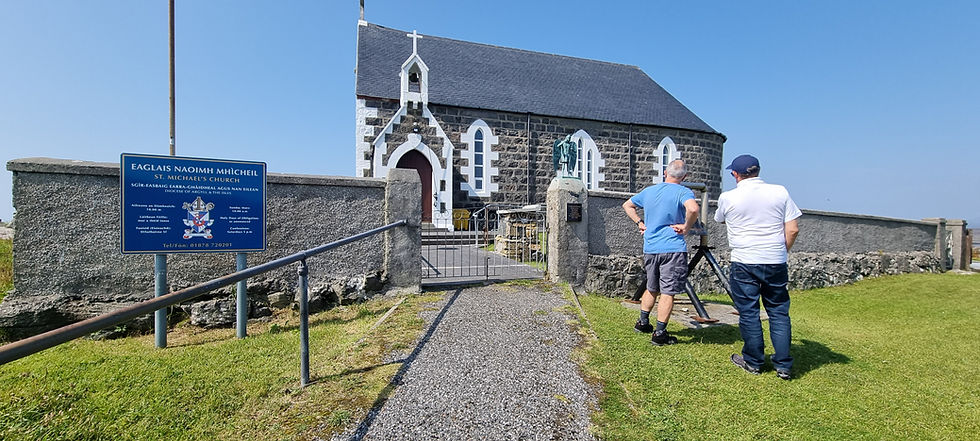Practical Steps to Bring Gaelic Back Into Everyday Life
- Aug 12
- 2 min read

For decades, Gaelic has been quietly retreating from daily life in the islands. English now dominates in homes, workplaces, and even in places where Gaelic once rang out naturally. The intergenerational chain is fraying — with fewer young people speaking the language fluently, and even fewer using it beyond the classroom.
But here on North Uist, I have seen something this summer that gives me hope.
At Love Gaelic’s Summer School, students from around the world immersed themselves in Gaelic morning to night — not just in lessons, but while cutting peat, visiting historic sites, and church.
They had daily conversations with native speakers. They laughed through pronunciation mistakes, swapped stories in the rain, and sang together while waiting for the ferry. By the end of the programme, they weren’t just learning Gaelic… they were living it.
And that’s exactly what we need in our island communities if Gaelic is to thrive again — not as a subject, but as a shared way of life.
What Works — Lessons from the Summer School
The most powerful learning didn’t happen behind a desk. It happened when Gaelic was woven into the activity itself:
Asking for tools while stacking peat.
Making jokes over coffee in the community hall.
Learning the words for fishing gear while standing on the pier.
This mirrors the natural way Gaelic was passed down for generations — through everyday life, not just formal teaching.
Five Practical Steps for Reversing the Decline
Create Local Gaelic Hubs Imagine community halls, cafés, or even shop corners where the unspoken rule is Gaelic-only. It’s low-cost, high-impact, and fosters real-life usage.
Mentorship Pairs Pair up older fluent speakers with younger learners for weekly chats. This is not just language transfer — it’s cultural bonding.
Micro-Immersion Days Once a month, a shop, school, or workplace could run entirely in Gaelic. Locals and visitors alike could join in, normalising the language in modern contexts.
Gaelic in Public Spaces From ferry announcements to community event intros, a consistent Gaelic presence keeps it audible, visible, and valued.
Living Language Projects Link Gaelic to traditional skills: weaving, boat-building, storytelling. Language becomes a working tool, not just a classroom topic.
Involving the Wider World
Tourism and visiting students can play a role — but only if engagement is authentic. Visitors should be encouraged to learn and use Gaelic in real contexts, contributing to the language’s vitality rather than treating it as a novelty.
Love Gaelic’s Role
Love Gaelic is not just teaching — we are demonstrating what works. Our summer school has proven that immersion, community connection, and cultural pride can reignite language use. We are ready to partner with schools, churches councils, and community groups to take these methods beyond our classroom walls and into the heart of island life.
If we act now — with creativity, cooperation, and commitment — Gaelic can once again be the language of the kitchen table, the shop counter, the pier, and the playground.
The future of Gaelic is not a distant dream. It’s here, on Uist, and it starts with us.











